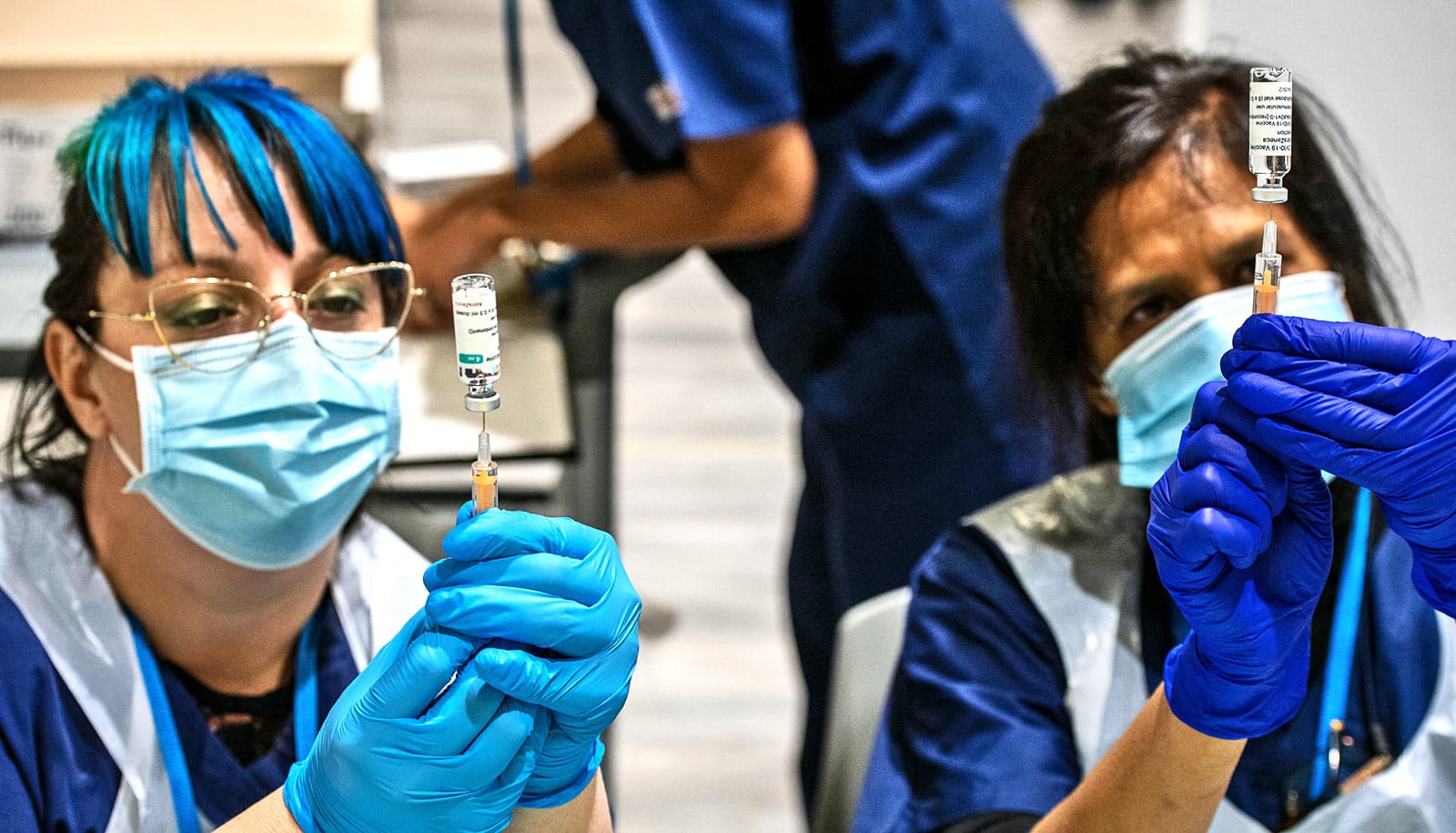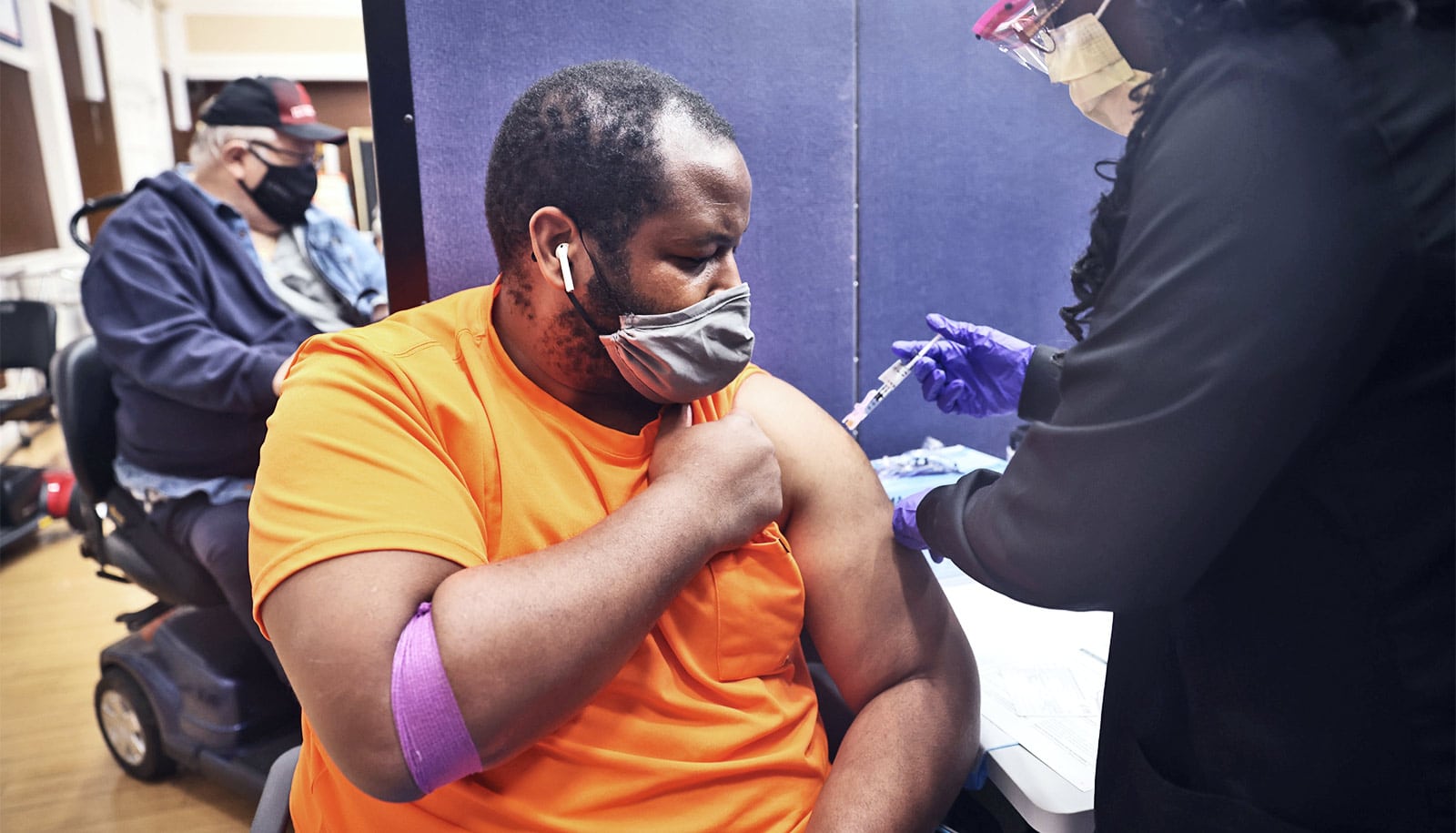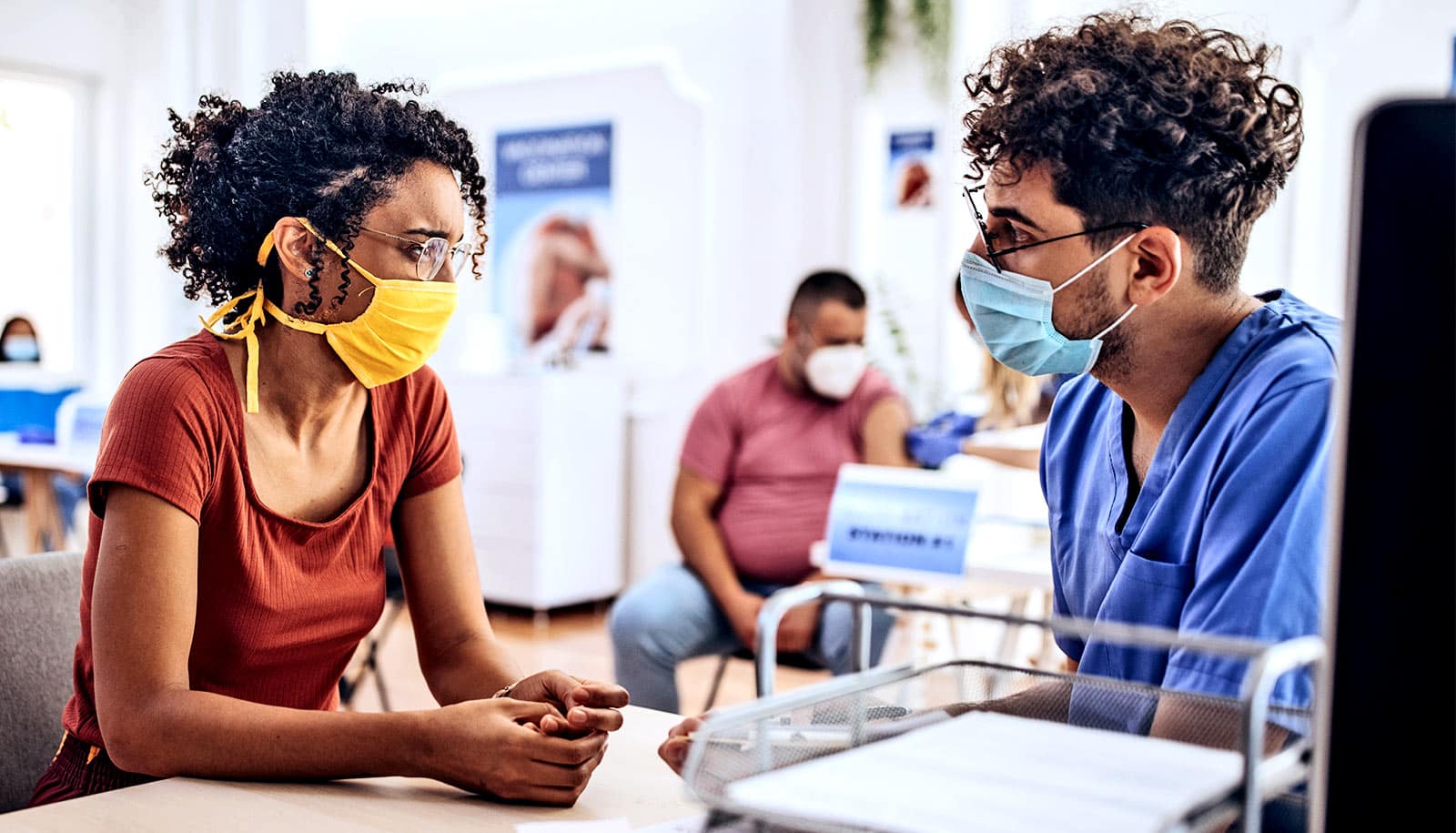Public health messages that promote COVID-19 vaccine rates may have less influence on vaccination decisions than the signals people receive from their own family and friends.
Therefore, the most promising public health interventions to promote COVID-19 vaccine uptake should seek ways to leverage social norms among close ties, according to the findings of a new study in the Proceedings of the National Academy of Sciences.
“One of the takeaways is the importance of people’s perceptions of the intentions of the people around them,” says lead author Nathaniel Rabb, a project manager at the Policy Lab at Brown University.
“It lends further credence to the idea about changing disclosure norms. It’s likely given other survey data we’ve seen that in groups where vaccination is less common, people read the norms and talk about it less, even if they are vaccinated. It’s almost taboo.”
The research team posits there’s a feedback loop that needs to be disrupted, Rabb says.
“It will certainly need a very different public health policy approach than putting up a billboard with how many people in your state got vaccinated, or berating people into doing it, or telling them they’re at terrible risk of peril,” Rabb says.
“It’s going to require a long-game strategy. In our results, it seems like you have to break these taboos about talking about it—and that’s not trivial.”
Researchers based their findings on surveys of Rhode Island respondents and the general US population in 2020 during the first year of the pandemic, and again in March 2021 once vaccines were becoming available to segments of the general population. They collected and analyzed the data in partnership with the Rhode Island Department of Health.
Participants answered questions about their intentions to get vaccinated and how many people they believe would get vaccinated among various groups—including their family and friends, neighbors, people in their city and state, and among Democrats, Republicans, and independents.
Willingness to vaccinate depended on the perceived extent to which others would vaccinate. The strongest relationship was between vaccination intentions and social norms for respondents’ friends and family. It weakened as the reference group expanded to people in one’s neighborhood, city, and state.
“The strength of the relationship goes down as the groups become more heterogeneous,” Rabb notes.
The findings can help inform public health policy as well as provide a jumping-off point to explore ways to disrupt the pattern the data illuminated.
“In the paper, we struggle with the implication mightily and walk through the options,” Rabb says. “Touting vaccination rates at the city or state level is unlikely to change anyone’s mind. But touting them at the friend and family level may not feel plausible or believable. The challenge is figuring out how to normalize it at the friend and family level—and that challenge puts a public health authority in a bind.”
Additional coauthors are from the University of Illinois Urbana-Champaign, Boston University, and Brown. The study is part of an ongoing partnership between the Policy Lab and the Rhode Island Department of Health related to COVID-19 response.
Source: Brown University



